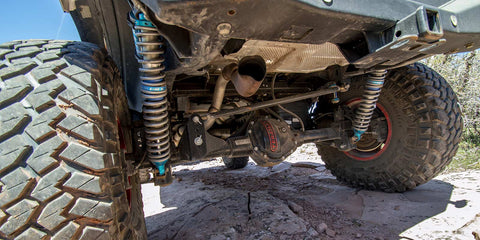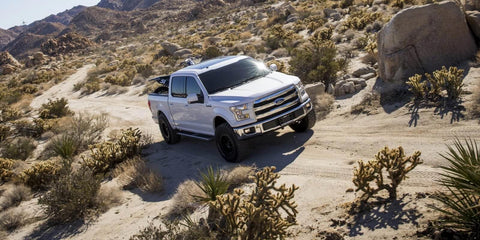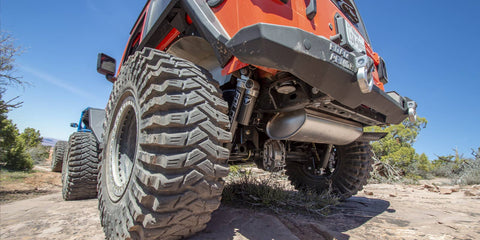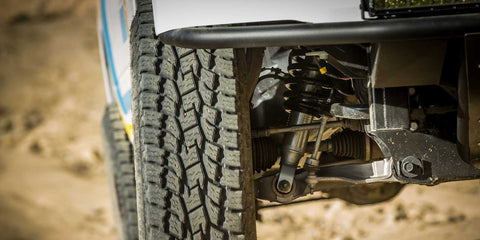Ride Review - Eibach 2.0 on a 2019 Ford Ranger FX4
Posted by Sean Reyes on
Stage 2 Findings (Fox 2.0 Performance)
When moving on from the Bilstein 5100 ride height adjustable shocks to the Fox 2.0 Coilovers and shocks, there was a dramatic difference in ride quality, instantly noticeable.
Comfort was the biggest gain here over small bumps, daily drive, easy trails. Handling suffered a tad, but still really good and only noticeable if it's a main concern or your vehicle is loaded up.
At the very basic level, these shocks have vastly different piston designs. Bilstein is digressive, Fox is linear, and Eibach will use both kinds of pistons depending on vehicle platform. Read more here if you want the nitty gritty details on different piston designs and how it translates to the road.
Eibach Pro Truck - Balanced Approach
If Bilstein is too firm for some, and Fox is too squishy for others, Eibach feels like the perfect middle ground.
We did confirm that Eibach is using a linear piston on the Ranger front coilovers, and a digressive piston on the rear 2.0 shocks, with a linear piston in the rear reservoir shocks.
Steve, the owner of the Ranger, got to do all sorts of driving around on the Eibach Pro Truck Shocks, daily driving to work, towing various weights, and ripping around off-road in Johnson Valley and Big Bear, two popular spots in Southern California.
With Eibach being newish to the light truck and Jeep space (compared to players like Bilstein, Fox, Rancho, etc), we were pleasantly surprised by the ride quality on display here. The shocks were performing just as well as the Fox off-road, with confidence-inspiring handling - we pushed pretty hard and couldn’t unsettle the Ranger at all.
Granted, we didn’t hit the whoops, but that’s not what these shocks are for, or what the Ranger is intended for. Can they handle them? Small surprising ones at times, yes - but nothing like what a 2.5 shock can handle.
To Run Reservoirs or Not?
The non-reservoir Pro Truck Shocks for the 2019+ Ranger are confirmed as using a digressive piston, meant for good on-road and easy-trail handling. Despite being a digressive rear shock, the Eibach shocks felt a bit more supple than the Bilstein 5100s we had prior to the Fox 2.0 - a welcome surprise, especially since the rear of this Ranger runs light.
When we upgraded the rear of the Ranger to the Pro Truck Reservoir shocks out in JV (in 104 degree heat mind you) - we noticed an immediate difference in the dirt.
The rear end felt a bit more planted when not in a straight line and running over unpredictable terrain, dirt curbs, washes, that sort of earth you see out in the wide-open desert. The linear piston and valving still provided good handling in lower speeds, but gave a little bit more on the choppy stuff which smoothed out the feel in the rear.
Think about sharp angles being rounded off when going from a digressive shock to a linear shock. A linear piston is more off-road oriented since you can valve for better high (shaft) speeds in compression and rebound. Meaning preventing bottom and top out on the harder hits.
With the linear piston it will feel smaller over shoppy terrain, but will also not blow through high speed events like big dips and big rollers. When coming out of a big roller and all the weight is off the vehicle, that catch afterwards will happen much faster and keep the vehicle in control.
Conclusions
If you’re hauling a lot of gear or weight, or towing plenty with your Ranger, then the non-reservoir is the way to go.
If you’re in the dirt a lot, or want more comfort over choppy terrain, then the reservoir option is more up your alley.














